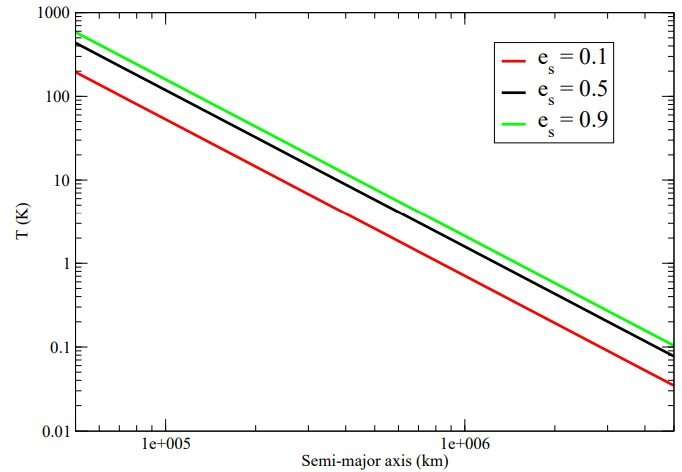Seeking Planet 9: An unconventional detection strategy


There’s a thriller in our photo voltaic system surrounding the orbits of Kuiper belt objects. A couple of trillion icy objects smaller than our moon orbit the solar in a donut-shaped ring past Neptune. Oddly, a cluster of outer Kuiper belt objects all ellipse in an identical manner, as if being gravitationally pulled in a single path. The main speculation is that an unseen object, 5 to 10 occasions the mass of Earth, is inflicting the pulling impact. The thriller object has been dubbed Planet 9.
Observations have but to find the supply of this gravity from the same old optical, microwave, infrared or electromagnetic wave spectrums, resulting in hypothesis that it could possibly be a rogue planet core, a small black gap, or perhaps a cluster of darkish matter. Any of those would make the item extraordinarily tough, if not unattainable, to detect.
An unconventional detection strategy has been proposed by Man Ho Chan, affiliate professor within the Division of Science and Environmental Research at The Schooling College of Hong Kong. In his paper “What if planet 9 has satellites?” which has been accepted for publication within the Astrophysical Journal, Chan focuses on the potential existence of satellites orbiting Planet 9.
Whereas in search of moons round a planet that hasn’t been discovered may initially sound like a tougher activity than discovering the planet itself, Chan illustrates that if Planet 9 has satellite tv for pc objects, these objects would have fluctuating warmth signatures as they orbit because of the technique of tidal heating. These warmth signatures could be 2.5 occasions increased than the anticipated vary for Planet 9 itself, and would even be a lot increased than any recognized Kuiper belt objects. Signatures on this vary ought to be detectable by the Atacama Giant Millimeter/submillimeter Array Observatory (ALMA), which has just lately undergone a functionality improve.
It’s recognized that objects inside the Kuiper belt can have satellites. Pluto, the dwarf planet smaller than our moon and former ninth planet in our photo voltaic system, is inside the Kuiper belt and has 5 moons.
Is there actually a Planet 9?
Astronomers Mike Brown and Konstantin Batygin of the California Institute of Expertise, after initially making an attempt to show that no such planet was required, have given the unusual outer orbits a .02% to .04% likelihood of naturally occurring with out a Planet 9 sort physique affecting their orbit. Regardless of preliminary skepticism, in 2016, they revealed a paper within the Astrophysical Journal titled “Proof for a Distant Big Planet within the Photo voltaic System,” and have since narrowed down the mass and potential orbital areas of Planet 9.
Based on Chan, the CalTech astronomers’ proposed mass for Planet 9 may accommodate as many as 20 satellites, growing its probabilities of observable tidal power warmth signatures.
Why have not we already discovered it?
If it’s a rogue planet or a remnant planetary core, having survived an early photo voltaic system recreation of planetary billiard balls, it may have an eccentric orbit. Pretty much as good as we’re at recognizing issues distant, these objects are usually trackable over time as a result of orbits are totally on the identical aircraft and shifting in the identical path across the solar. An orbit not on that aircraft and stepping into a unique path, no matter measurement, could be exceedingly laborious to trace.
If a black gap is inflicting the pull, one measured in Earth plenty and never the same old photo voltaic plenty, it will be sufficiently small to suit properly into an elementary faculty backpack. This small measurement makes gravitational lensing and gamma-ray emissions too faint to register and would require an growth of the usual mannequin to accommodate its existence.
And darkish matter is so named exactly as a result of it has prevented all strategies of detection besides gravitational affect on a lot bigger scales.
But any of those potential objects may help satellites. Due to Chan’s work, we now have a very good technique for locating them. Since there are not any different astrophysical mechanisms previous Neptune that might improve temperatures to the ranges detailed in his paper, the satellites ought to stand out in opposition to the colder background and supply a transparent sign that Planet 9, regardless of how darkish, is on the market.
Extra info:
Man Ho Chan, What if planet 9 has satellites?, arXiv (2023). DOI: 10.48550/arxiv.2301.13471
© 2023 Science X Community
Quotation:
Seeking Planet 9: An unconventional detection strategy (2023, February 22)
retrieved 25 February 2023
from https://phys.org/information/2023-02-planet-unconventional-approach.html
This doc is topic to copyright. Other than any honest dealing for the aim of personal research or analysis, no
half could also be reproduced with out the written permission. The content material is supplied for info functions solely.



/cdn.vox-cdn.com/uploads/chorus_asset/file/24722393/steinway_billiards_close.jpg)